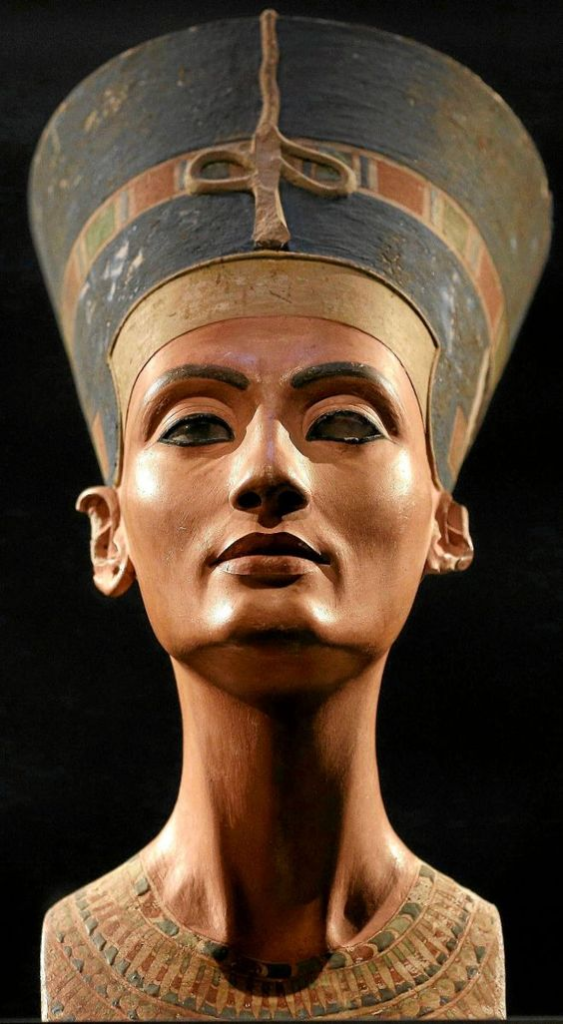
The Queen Of Egypt Cleopatra
Cleopatra was the last active ruler of the Ptolemaic Kingdom of Egypt, reigning from 51 BC until her death in 30 BC. Known for her intelligence, political acumen, and dramatic alliances with Julius Caesar and Mark Antony, Cleopatra’s reign marked a significant period of Egyptian history and its complex relationship with Rome. Her life and legacy continue to captivate imaginations and influence popular culture.
Early Life And Ascension To The Throne Of Cleopatra:
Cleopatra VII was born in 69 BC to Ptolemy XII Auletes and his wife Cleopatra V. She was part of the Ptolemaic dynasty, which ruled Egypt following the death of Alexander the Great. Cleopatra’s early life was shaped by the political and cultural environment of the Hellenistic world, with her family being of Macedonian Greek origin but ruling over an Egyptian population.
In 51 BC, after the death of her father, Cleopatra ascended to the throne at the age of 18, co-ruling with her 10-year-old brother, Ptolemy XIII. The early years of her reign were marked by political instability and challenges, as Cleopatra faced opposition from court factions and struggled to consolidate her power. Her initial co-rule with Ptolemy XIII eventually led to a power struggle, during which Cleopatra was briefly driven out of Alexandria.
Her Reign As Queen Of Egypt:
Her strategic alliances and efforts to restore Egypt’s power. After initially struggling against her brother Ptolemy XIII, she secured her position with Julius Caesar’s support and later aligned with Mark Antony. Their relationship, both romantic and political, aimed to strengthen Egypt’s influence but led to conflict with Rome.
Relation Of Cleopatra With Julius Caesar And Mark Antony:
Julius Caesar: Cleopatra’s relationship with Julius Caesar began in 48 BC when he visited Alexandria. At the time, Cleopatra was embroiled in a power struggle with her brother Ptolemy XIII. Caesar’s support helped her regain the throne, and they became romantically involved. Cleopatra’s alliance with Caesar strengthened her position, and they had a son, Caesarion (Ptolemy XV). Caesar’s influence was instrumental in consolidating her rule, but his assassination in 44 BC left Cleopatra in a precarious position.
Mark Antony: After Caesar’s death, Cleopatra aligned with Mark Antony, who was one of Caesar’s key supporters. Their alliance, formed around 41 BC, was both political and romantic. Cleopatra and Antony’s relationship produced three children and aimed to strengthen Egypt’s position against Rome. However, their partnership antagonized Octavian (later Augustus), leading to political and military conflicts. The alliance culminated in the famous Battle of Actium in 31 BC, where Antony and Cleopatra’s forces were defeated. The loss led to their eventual suicides and the annexation of Egypt by Rome.
The Battle Of Actium And Cleopatra Downfall :
The Battle of Actium, fought on September 2, 31 BC, was a decisive naval confrontation between the forces of Mark Antony and Cleopatra VII, and those of Octavian, the future Emperor Augustus. Antony and Cleopatra’s fleet, positioned off the coast of Actium in Greece, faced Octavian’s more formidable navy led by Agrippa. The battle resulted in a crushing defeat for Antony and Cleopatra, with their forces being decisively routed.
The defeat at Actium marked the beginning of the end for Cleopatra. Following the loss, she and Antony retreated to Alexandria, where their political and military position rapidly deteriorated. In 30 BC, Octavian’s forces invaded Egypt, leading to the fall of Alexandria. Facing inevitable capture, Cleopatra and Antony both chose suicide. Cleopatra’s death marked the end of the Ptolemaic dynasty and Egypt’s transition from an independent kingdom to a Roman province, sealing her legacy as a dramatic and pivotal figure in ancient history.
Cleopatra Death:
Cleopatra VII’s death occurred on August 10, 30 BC, following the defeat of her forces and the fall of Alexandria to Octavian’s troops. Facing imminent capture and a bleak future, Cleopatra chose to end her life rather than be paraded in a Roman triumph. The traditional account suggests that she committed suicide by allowing a venomous asp (a type of snake) to bite her.
In the aftermath of her death, Octavian (later Augustus) ensured that Cleopatra’s son, Caesarion, was also killed, and Egypt was annexed into the Roman Empire, marking the end of the Ptolemaic dynasty. Cleopatra’s dramatic end solidified her place in history as a tragic and powerful figure whose life and reign continue to captivate and inspire.
Cleopatra Image In History And Popular Culture:
Historical Image: Historically, Cleopatra is remembered as a shrewd and ambitious ruler who sought to restore Egypt’s former glory and assert its independence amid the expanding power of Rome. Her alliances with Julius Caesar and Mark Antony were pivotal in her reign, and her dramatic end, marked by her suicide, has cemented her legacy as a tragic heroine. She is often viewed as a powerful female leader who used her charm and political acumen to navigate the treacherous waters of Roman politics.
Popular Culture: Cleopatra’s image in popular culture is a blend of fact, myth, and artistic interpretation. She has been portrayed in various forms of media, including literature, theater, and film. Shakespeare’s play Antony and Cleopatra and films like Cleopatra (1963), starring Elizabeth Taylor, and Cleopatra (1999), featuring Leonor Varela, have shaped her portrayal as a figure of immense beauty and charisma. Modern depictions often emphasize her exoticism and romantic entanglements, sometimes overshadowing her political and intellectual achievements. Despite variations in portrayal, Cleopatra remains an iconic symbol of power, allure, and drama.














